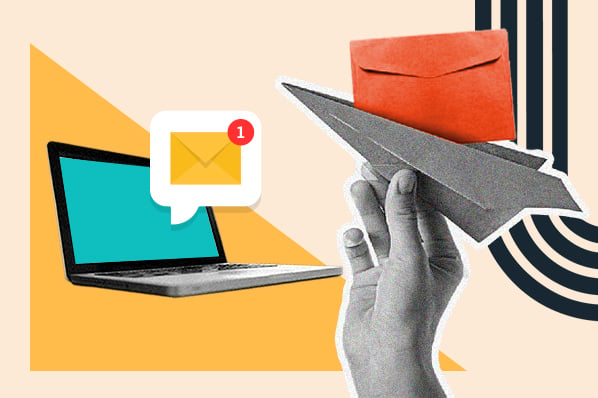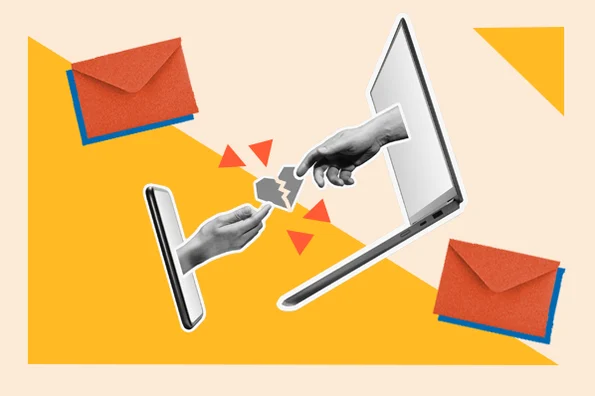
You’re not supposed to judge a book by its cover, but unfortunately, that’s how prospects assess your sales emails. In a world where people send and receive 215 emails a day, not to mention all the texts, instant messages, and Snapchats, there’s no practical way to manage your inbox besides scanning subject lines for things that seem important (or not).
Which is why sales email subject lines are so important. They’re the barometer by which your email’s relevance will be judged, read, or deleted. And if you make any of the fatal mistakes below, your message will forever be relegated to sales email purgatory: The “Trash” folder.
Find out how your email open rate compares to your industry and how to improve that number.
7 Fatal Sales Email Subject Line Mistakes
1) Your subject line is too long.
A study of over 40 million emails by Boomerang found that email subject lines that were three to four words long received the highest response rates. But don’t swing too far in the other direction -- emails with no subject line at all only saw a 14% response rate.
Short subject lines are also easier to read on mobile. Your subject line is more likely to get cut off the longer it gets, and since you don’t know whether your email will be read on desktop or mobile, stay on the safe side and keep things short.
2) Your subject line is misleading.
If you saw an email with the subject line “Re:”, you’d think you’d spoken with the sender before and you’d probably open it to avoid missing a potentially important message. If you then realized that message was a first-touch prospecting email masquerading as a reply, you’d probably be annoyed. Even if didn’t immediately hit “delete” and found the message mildly interesting, you’d probably have a bad taste in your mouth.
Your prospects feel the same way. Don’t jerk them around or mislead them -- even if you score a quick win, using dishonest tactics is a no-no. Treat your prospects like you’d want to be treated, and always be straightforward and truthful.
3) You forgot to mention a referral.
A good sales referral is golden, and referencing a trusted acquaintance is the email equivalent of the inside track. So if you have an introduction from a mutual connection, mention the referral in your subject line. Even if your prospect ultimately isn’t interested in making a purchase, highlighting someone they’re familiar with makes it much more likely they’ll take the time to read and respond to your message.
4) Your email is clearly trying to sell something.
I get emails all the time with variations on this subject line: “HubSpot & <company>?”
I open these emails, but literally only because in my capacity as a writer for this blog, I have a vested interest in understanding how sales reps are reaching out to prospects. If I were in any other job, I’d probably send these emails straight to the trash.
Don’t waste valuable subject line real estate referencing your product or your company -- two things your prospect may not have heard of and therefore probably doesn’t care about.
5) Your subject line doesn’t reference the content within the email.
Don’t bury the lede. In sales, there’s absolutely no value in being coy about what you’re offering. So whether you’re sending a study, responding to a question on social media, or providing something else of value to your buyer, be as upfront as possible. Sum up exactly what your prospect will get out of reading your email, then make it the subject line.
6) Your subject line is incredibly generic.
Here’s the reality of sales: If you were able to identify a buyer that seems like a good fit for your business, other sales reps probably have to. If you were able to identify a prospect who’s also an economic buyer, that person probably fields messages from tons of sales reps daily, in addition to all the internal communications she has to deal with. Making something bland like “Checking In” your subject line is a surefire way your message will get lost in the shuffle.
7) Your personalization tokens are broken.
At HubSpot, we’re big fans of personalization. From templates that utilize personalization tokens to actual substantive customization such as targeted advice, you should absolutely be taking advantage of technology and the wealth of information available on the internet to make your sales emails better.
That is … if you do it correctly. Before sending any automated emails to buyers, make sure all your personalization tokens are correct and updated.
Bonus Sin: Not including any personalization.
Like I said, we’re big fans of personalization. In fact, a personalized, buyer-centric sales approach is the only kind we support. Even if your subject line is short, you still have room to personalize -- and that doesn’t just mean including your prospect’s name. Include a tidbit of relevant information, a hook that references the trigger event that spurred you to reach out, or even one of your targeted recommendations in the personalized subject line. Just make sure that you’re being personal and helpful.
Which other subject line mistakes drive you crazy? Let us know in the comments below.












